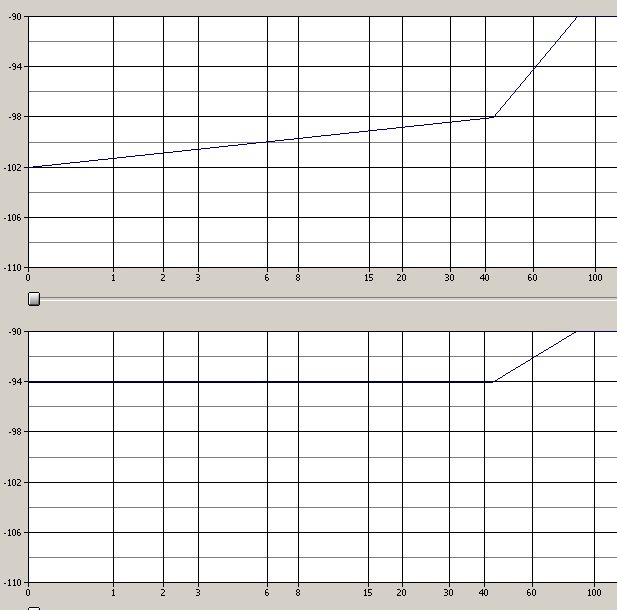user 10827
Well-known member
- Joined
- Sep 21, 2007
- Messages
- 786
Hi Tanov, is that waveform simultaneous through the Trident and the Focusright? they look widely different, Ill assume not.
I see the levelling in the Trident waveform you speak of.
Can you tell us what you have done in respect to gain of the mic amp circuit? I see no gain control in your pictures, does this levelling happen if you reduce the gain of the circuit? what is odd, looking at your waveform, that the levelling happens below the rail voltage...and only in the positive half of the cycle, perhaps it is a bad capacitor...odd indeed.
I have not seen this in our tests.
One area we had problems in was to do with stability at high gain, but who doesn't. The bread board, other early prototypes and the 1st PCB design both exhibited this problem each to a lesser degree, it took much work on the layout, also not using a ground plane was the big one, the mic amp circuit really does not like ground planes.
I have also read reports from Trident users that the consoles did pick up the odd stray RF signal at high gains, could be what we experienced, but this maybe heresy.
So now we have a very stable circuit, that we have tested and tested, and it sounds kick ass!
I see the levelling in the Trident waveform you speak of.
Can you tell us what you have done in respect to gain of the mic amp circuit? I see no gain control in your pictures, does this levelling happen if you reduce the gain of the circuit? what is odd, looking at your waveform, that the levelling happens below the rail voltage...and only in the positive half of the cycle, perhaps it is a bad capacitor...odd indeed.
I have not seen this in our tests.
One area we had problems in was to do with stability at high gain, but who doesn't. The bread board, other early prototypes and the 1st PCB design both exhibited this problem each to a lesser degree, it took much work on the layout, also not using a ground plane was the big one, the mic amp circuit really does not like ground planes.
I have also read reports from Trident users that the consoles did pick up the odd stray RF signal at high gains, could be what we experienced, but this maybe heresy.
So now we have a very stable circuit, that we have tested and tested, and it sounds kick ass!




